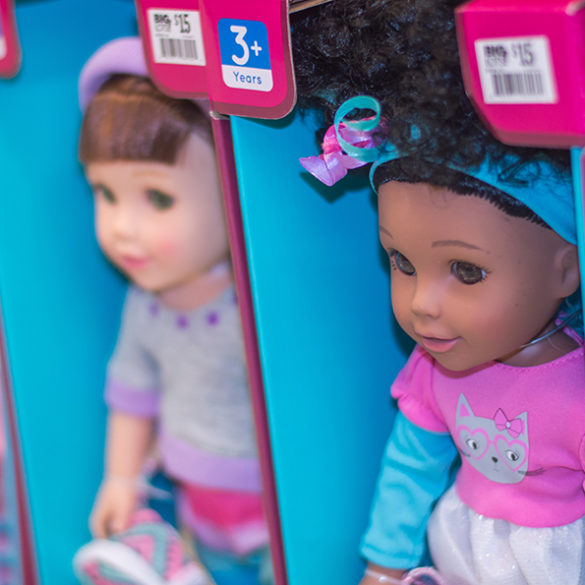Lack of representation in media can create self-esteem issues in young girls.
One day, when I was around 8 years old, my best friend Maddie and I were at her house playing with her Barbie dolls. Even though Maddie was white, and I was black, we always referred to each other as sisters. While playing with the Barbies, Maddie turned to me.
I wish they made more Barbies that looked like you.
What Maddie said made me think. I started to wonder why Barbie didn’t look like me. All my Barbie dolls were white with long, blonde hair and blue eyes. Barbie was a fictional character that I looked up to, and so did the majority of girls I knew in grade school. I thought about how cool it would be to have a Barbie that had brown eyes, brown skin, and curly, textured hair.
Although the first official black Barbie came out in 1980, it wasn’t the common Barbie that was publicized, and it definitely wasn’t the common Barbie to play with. In fact, she had white features, like smooth hair rather than the curly textured hair of a black woman in reality.
This lack of diversity isn’t just with toys, though.
According to the Comprehensive Annenberg Report on Diversity in Entertainment, more than 400 films and TV shows said 28.3 percent of characters were from non-white racial/ethnic groups, while these groups occupy nearly 40 percent of the country’s population. The researchers for the study call this issue an “epidemic of invisibility.”
As I grew up, I saw there weren’t really any black girls on T.V. or in movies. And if they were present they were always stereotyped. The girls either came from poverty, had no father figure, or were obnoxious and had an attitude.
In reality that’s not always the case. I grew up in a loving household with my mom, dad, and my dog. I didn’t come from the “ghetto,” and I’m probably one of the most soft-spoken people you will ever meet. I’m far from loud and obnoxious.
Melinda Messineo, a sociology professor with expertise in diversity at Ball State University, says that not only do stereotypes impact the perceptions of non-members in that group, but they also impact members of that group in powerful ways. She says this is an example of a term called “stereotype threat.”
As a kid, I idolized the Disney princesses. I had dolls, clothes, and princess-themed birthday parties. I didn’t notice that there was only one black princess until I was old enough to understand racism.
I believe no one is born racist. Instead, they learn racist and prejudiced ideas from parents, peers, and the media.
Princess Tiana was the first African-American princess to be brought into the Disney princess franchise, with the movie The Princess and the Frog releasing in 2009. Set in New Orleans in the 1920s, Princess Tiana was a waitress and a chef who dreams of owning a restaurant. At a party and after some misunderstandings, Princess Tiana is persuaded to kiss a frog who is really a prince, launching the plot of the movie.
Princess Tiana wasn’t Disney’s only black character. There were others, but they didn’t last as long as I would have liked. The Proud Family stopped airing on Disney Channel in 2005, followed by That’s So Raven, which stopped airing in 2007, and Cory in the House in 2008. When those three shows, which featured predominantly black characters ended, I felt like I could no longer relate to anyone on Disney Channel.
The media made me feel like there was something wrong with being black—that it wasn’t normal. I felt a growing insecurity inside of myself that I had no idea could stay with me for such a long time. It took a lot of self-love for me to understand that just because it felt like the media tried to tear me down with stereotypes and subliminal messages, it didn’t mean I had to fit those negative images.
Despite all the negative aspects of the media, it has changed. Messineo says in many ways the nature of presentations in the media landscape overall has become more diverse. However, consumers are able to consume these images more narrowly so that any given individual experiences only a small segment of this diversity.
Advertising algorithms use previous search information to direct new content to consumers. So someone who likes dogs, Messineo says, will see more content with dog-related topics, advertisements, and stories. People don’t notice the echo chamber that new media has created around them.
Despite some progress over time, media outlets still largely portray the idea that fair skin, straight hair, and blue eyes are the more preferable and acceptable features in American society. And young girls learn a great deal about what it means to be female through the media they consume, Messineo says.
But I have learned to accept myself regardless of the images I grew up seeing.





